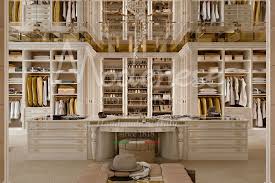In a world of mass-produced minimalism, Arabic-inspired interiors are finding renewed relevance. Warm, layered, and detail-rich, these designs bring a sense of culture, tradition, and timelessness to spaces that are too often purely functional. One unexpected space where this influence is quietly gaining global traction is the bathroom.
Arabic-influenced bathroom design blends heritage with luxury, minimalism with opulence, and functionality with craftsmanship. Whether it’s a sculptural arch framing a mirror or a patterned tile wrapping a shower niche, regional elements once considered niche are now becoming staples in luxury design vocabularies around the world.
This blog explores what makes Arabic-influenced bathroom design unique, and why global homeowners, architects, and hospitality brands are embracing it.
What Defines Arabic-Influenced Bathroom Design
Arabic and Islamic design has always stood apart for its intricate details, layered textures, and spiritual symmetry. When brought into a bathroom setting, these principles lend a sense of richness and calm.
Here are the core elements often seen in Arabic-inspired bathrooms:
Arches and curves
Instead of sharp corners or straight lines, doorways, mirrors, and alcoves often feature soft arches that give the space architectural depth.
Mosaic and zellige tiles
Geometric tiles in bold patterns or muted tones add cultural expression to walls, floors, and accents. Moroccan zellige tiles are especially popular in global boutique hotels.
Tadelakt and textured plaster
Originating from Moroccan hammams, tadelakt offers a smooth, matte finish with a soft reflective quality that adds depth to minimalist bathrooms.
Ornate lighting
Metal lantern-style light fixtures with intricate cutwork often serve as functional sculptures in Arabic-style bathrooms.
Brass and gold accents
Taps, handles, and accessories often feature brushed or antique brass finishes that warm up cool spaces.
Earthy and jewel-toned palettes
The color story often blends earthy terracottas, sand, deep blues, and emerald greens for a rich yet grounded effect.
Where the Influence Is Showing Up Globally
Arabic bathroom design is making its way into more than just heritage homes or Middle Eastern hotels. Its influence can now be seen in a range of settings across the world.
Luxury hotels
Boutique resorts in Europe and Asia are incorporating mosaic tiling and hammam-inspired features in spa bathrooms to evoke a sense of destination luxury.
Contemporary villas
New homes in places like Bali, Ibiza, and Tulum are embracing tadelakt walls and curved niches to bring warmth and softness to otherwise modern structures.
Urban apartments
Design-forward apartment owners are using small touches like arched mirrors, brass fixtures, and monochrome mosaics to add character to compact bathrooms.
Wellness spaces
Private spas and at-home wellness rooms are adopting hammam elements like low seating, atmospheric lighting, and natural stone to create meditative spaces.
Why the Style Resonates in 2025
The rise of Arabic-influenced bathrooms is not just about visual appeal. It’s also deeply tied to how homeowners are rethinking the function of their spaces.
Emphasis on ritual and relaxation
Arabic bath culture, rooted in hammams and traditional bathing rituals, aligns perfectly with today’s self-care focused lifestyles.
Aesthetic warmth
In contrast to cold, all-white modern bathrooms, Arabic-influenced design feels warm, welcoming, and timeless.
Artisan appeal
As interest grows in handmade, sustainable materials, elements like hand-cut tiles, natural stone, and textured walls offer a tactile experience that mass-produced materials cannot replicate.
Timelessness
While trends fade, Arabic design’s roots in centuries-old art and architecture lend it an evergreen appeal that transcends fads.
Common Applications in Modern Bathroom Design
Here’s how designers are integrating Arabic touches into modern bathroom settings:
| Feature | Modern Application Example |
|---|---|
| Arched Niches | Built-in storage with curved lines above the bath area |
| Zellige Tile | Accent walls behind the vanity or in shower stalls |
| Tadelakt Walls | Seamless plaster finish that replaces tiled surfaces |
| Pendant Lanterns | Hanging fixtures above freestanding tubs |
| Inlaid Mirrors | Arched or brass-framed mirrors with carved details |
Balancing Arabic Influence with Modern Functionality
Successfully using Arabic aesthetics in bathrooms requires balance. Overdoing it can make the space feel thematically heavy or out of place. Instead, modern designers are opting for a layered approach.
Use statement pieces selectively
One arched mirror or a single wall of mosaic tiles is often more impactful than covering every surface.
Combine with neutral materials
Pair ornate patterns with calming textures like travertine, lime plaster, or matte black hardware to prevent visual overload.
Focus on lighting and shadow
Arabic design thrives on contrast. Use dimmable lighting to highlight textured walls and cast patterns through cutwork fixtures.
Make it personal
Whether through a family heirloom brass tray used for storage or a custom-carved cabinet, integrating meaning makes the space feel authentic.
The Global Future of a Regional Aesthetic
As the design world continues to globalize, regional styles like Arabic and Moroccan are being reinterpreted with modern restraint. The result is a new visual language that honors heritage while feeling fresh, sophisticated, and relevant.
For bathrooms, this fusion is particularly powerful. A space that is private, intimate, and ritualistic by nature finds harmony with the symbolism, craft, and sensuality that Arabic design brings.
In the years ahead, expect to see more bathrooms across the globe embracing curved lines, warm surfaces, and artistic patterns not just for their beauty, but for the way they make us feel.
That feeling of stillness, luxury, and belonging. One arch, one tile, and one lantern at a time.

)
)
)
)




